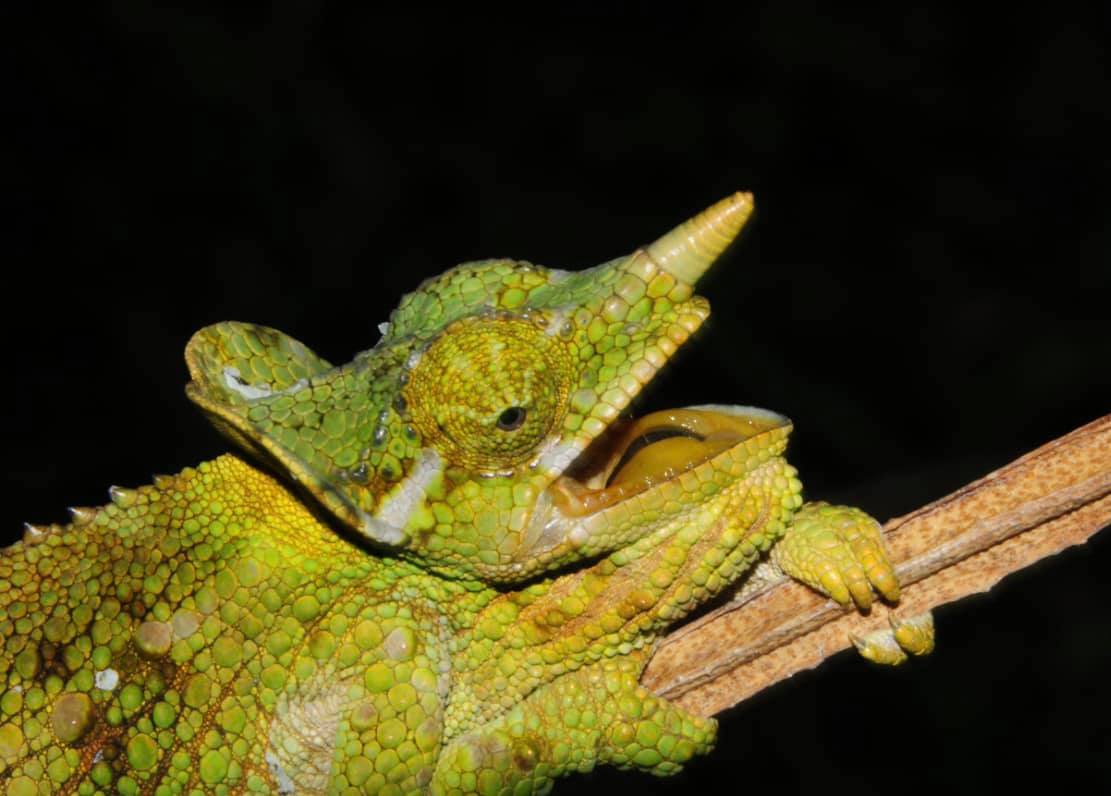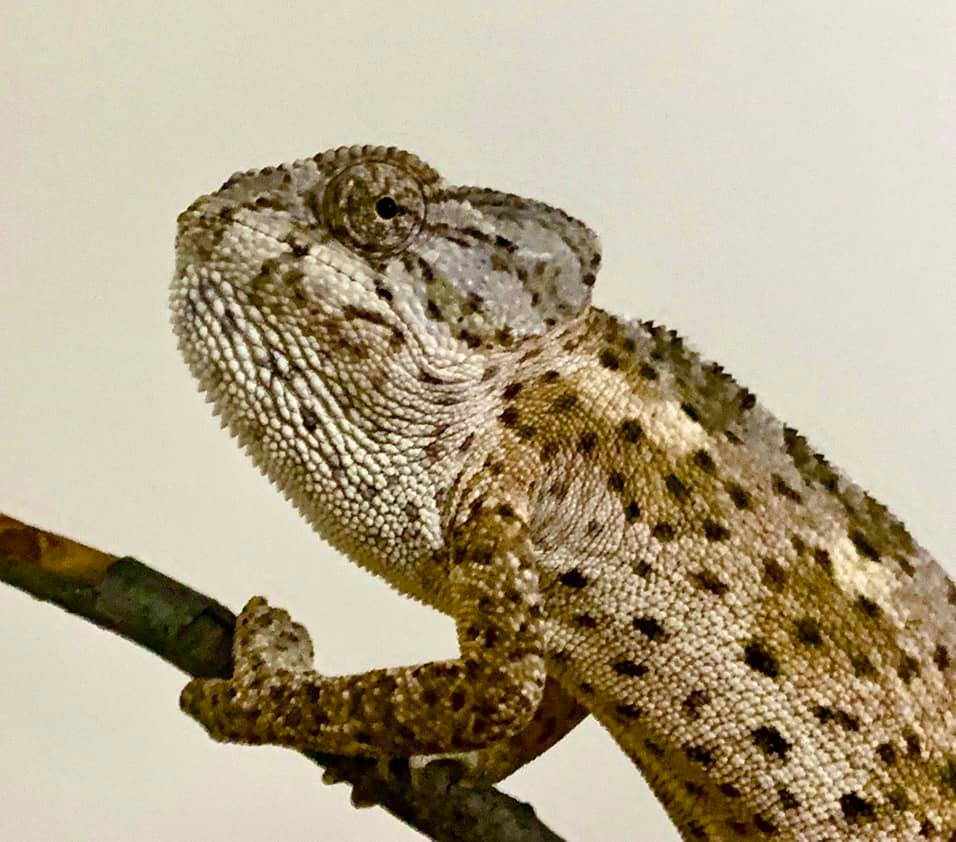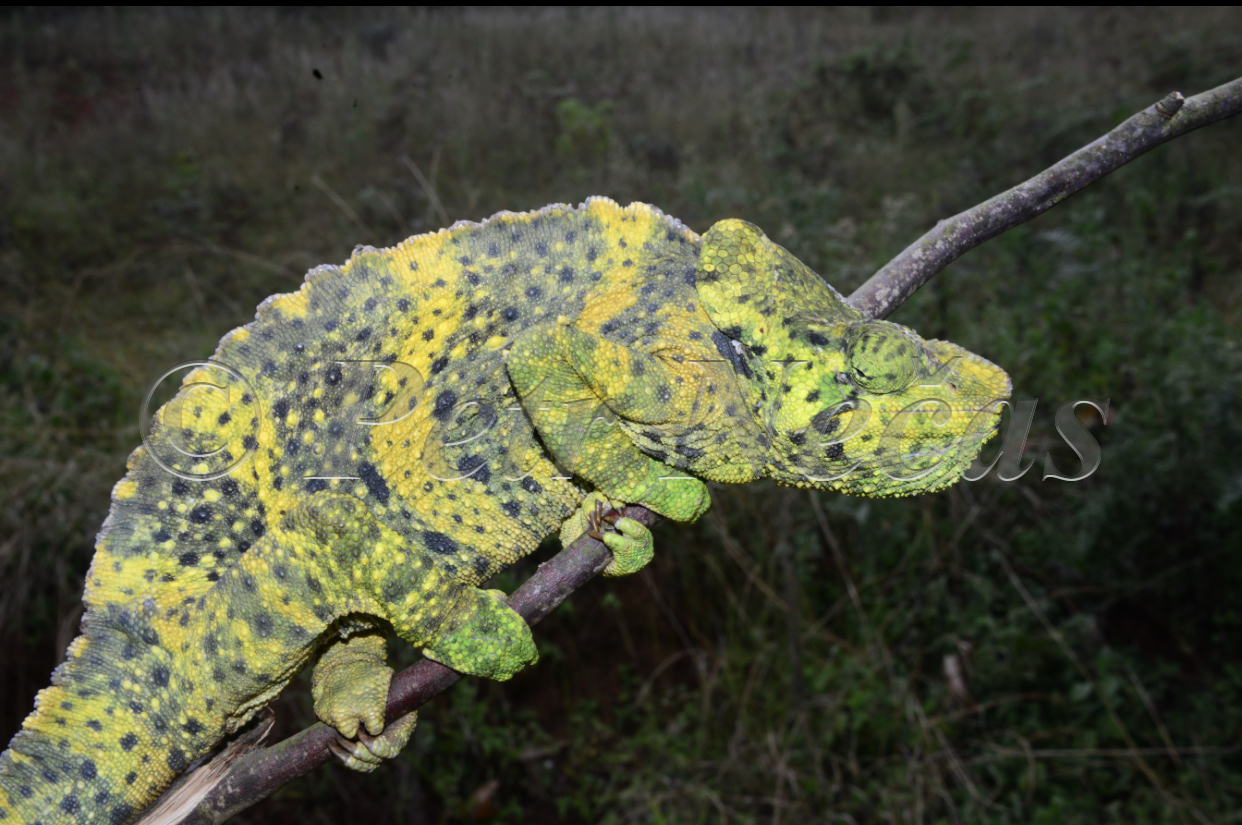SAUDI SPUR CHAMELEON
Chamaeleo calcarifer was described by Peters in 1870 as Chamaeleo calcaratus and the type locality was erroneously given as Bembatuka [= Bombetoka] (in error for Arabian Peninsula; probably near Aden, Yemen).





























